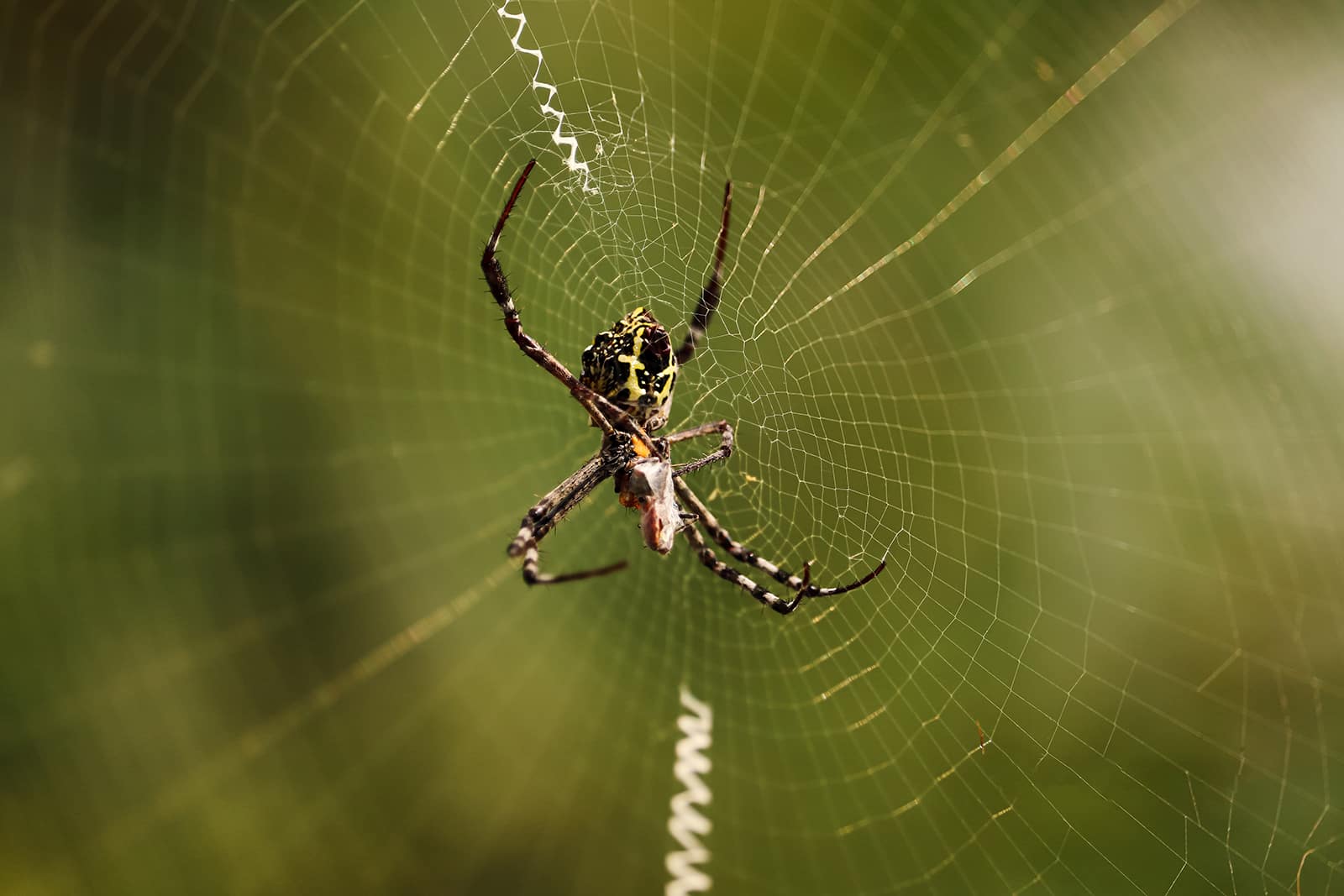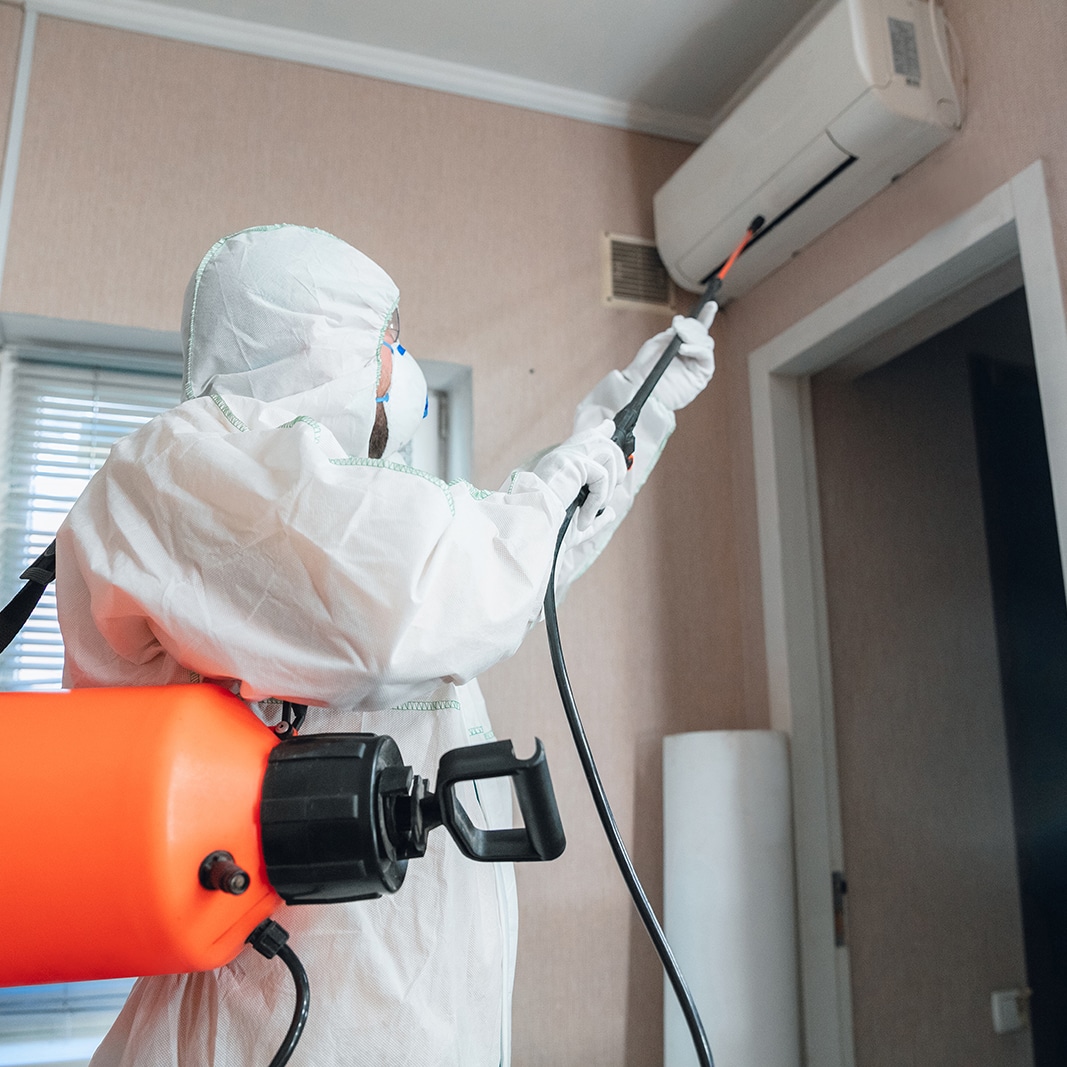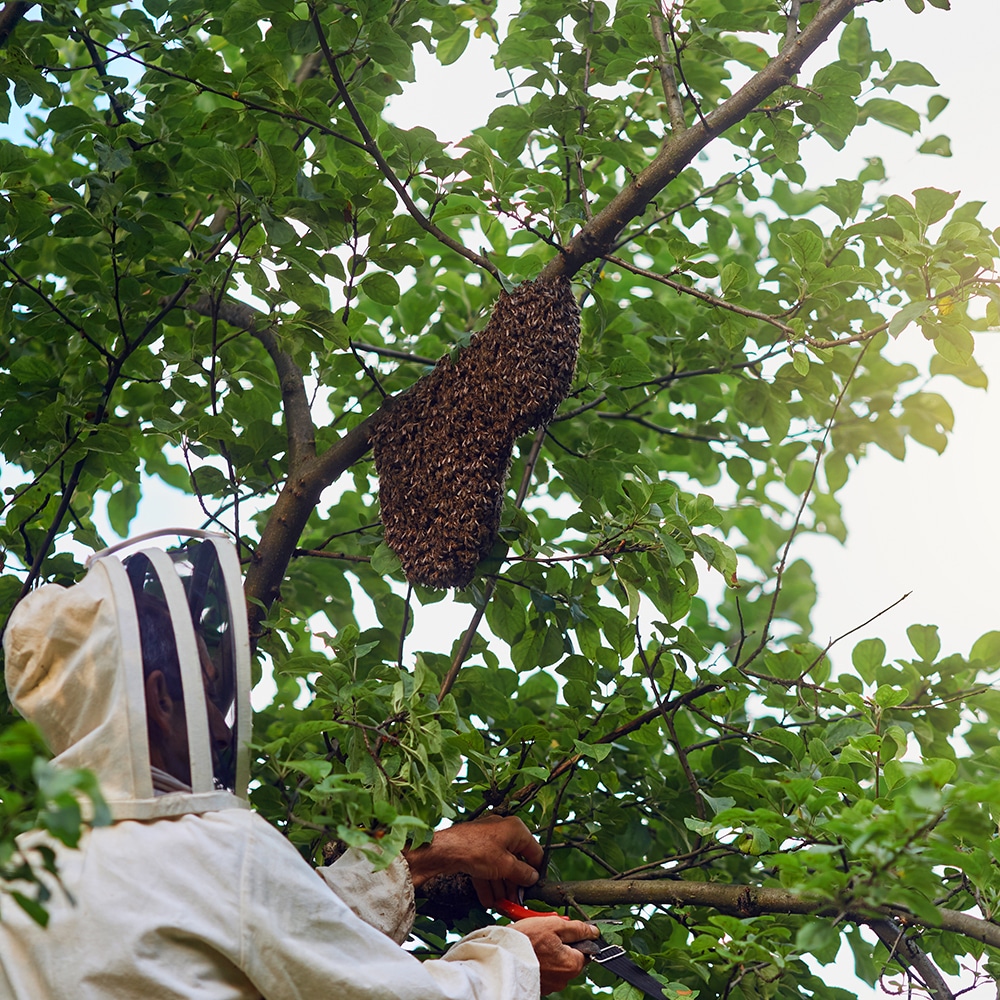
Why Do Spiders Come Back And Why
Why Do Spiders Come Back And Why On The Central Coast NSW. Responsive Proactive Solutions. Detail-focused for lasting results. Call Adam on 0431 222 894
Seasonal Maintenance Planning can transform your home care routine on the Central Coast NSW. By adopting this strategy, you ensure your home stays in top condition year-round. At Vital Pest Control, we offer expert tips for effective maintenance.
Winterising Pipes and Exteriors
Prepare your home for colder months by insulating pipes. This prevents freezing and bursting. Check roof and gutters to avoid leaks. Protecting exteriors can save costly repairs.
Spring Cleaning and Yard Prep
Declutter and clean indoor spaces to welcome spring. Tidy your garden, removing weeds and dead plants. A neat yard enhances curb appeal and sets a fresh tone.
Summer Pest Watch
Inspect for pests as temperatures rise. Use traps and barriers to keep them out. Regular checks ensure a pest-free environment, maintaining your peace of mind.
Autumn Leaf Removal
Clear fallen leaves regularly from lawns and gutters. This prevents blockages and keeps your garden healthy. Leaf removal also prepares your garden for winter.
Adjusting AC and Furnace Filters
Replace filters seasonally to improve air quality. Clean filters ensure efficient heating and cooling. This simple step saves energy and reduces utility costs.
Changing Smoke Detector Batteries
Test smoke detectors every season. Fresh batteries guarantee safety in emergencies. This easy task protects your family and home effectively.
Rotating Stored Items Seasonally
Reorganise storage spaces to access seasonal items easily. This reduces clutter and improves efficiency. Rotating items keeps your home functional and tidy.
Inspecting Seasonal Decor
Check decorations for damage and pests before use. This ensures they’re safe and appealing. Proper care prolongs the life of your cherished decor.
Discover how we can help you today! Contact Vital Pest Control for more insights and solutions tailored to your needs.

Preparing your Central Coast NSW property for winter is crucial, especially when it comes to safeguarding your pipes and exteriors. Winterising ensures you prevent costly repairs and maintain a pest-free environment. As temperatures drop, these steps become essential for maintaining your home or business.
Insulating Pipes
Insulating your pipes is a vital step in winterising. Use foam pipe insulation or fibreglass wrap to cover exposed pipes, preventing them from freezing and bursting. This not only saves on repair costs but also helps in maintaining a steady water supply throughout the winter months. Proper insulation can prevent moisture build-up, reducing the risk of pest infestations in pipe areas.
Sealing Cracks and Gaps
Seal any cracks or gaps in your building’s exterior to keep out cold air and pests. Use caulk or weather stripping to cover openings around windows, doors, and utility lines. This not only aids in energy efficiency but also acts as a barrier against rodents and insects seeking warmth indoors. Regular inspections can help identify new gaps that may appear over time.
Maintaining Gutters and Downspouts
Clear gutters and downspouts of debris to ensure proper drainage. Clogged gutters can lead to water overflow, which may cause structural damage and invite pests like termites. Keeping these areas clean prevents water from pooling around your foundation, protecting your property from both water damage and pest infestations during the colder months.
Spring on the Central Coast of NSW is an ideal time to refresh your home and garden. As temperatures rise and nature awakens, it is also an opportunity to tackle pest control. Vital Pest Control offers expert advice to help you prepare your yard and home, ensuring a pest-free environment during this lively season.
Clear Debris and Prune Vegetation
Start with clearing away leaf litter, fallen branches, and other debris that might have accumulated over winter. These materials can harbour pests like termites and ants. Pruning overgrown bushes and trees not only helps plants flourish but also reduces hiding spots for insects and rodents. Keep branches away from your house to prevent pests from entering.
Inspect and Repair Home Structures
Check your home’s exterior for cracks or holes that could invite pests inside. Seal gaps around windows, doors, and pipes. Repair any damaged wood and replace broken screens. These small fixes can significantly deter pests from entering your living space.
Maintain Your Lawn and Garden
Mow your lawn regularly and keep it well-watered. A healthy yard discourages pests from settling in. Plant pest-repelling flowers and herbs like lavender and rosemary. Such plants add beauty while naturally deterring unwanted insects.
Following these steps ensures a pleasant and pest-free spring season, allowing you to enjoy your outdoor spaces fully. Vital Pest Control can assist with any pest prevention needs, ensuring your home remains safe and comfortable.
Summer on the Central Coast NSW is a delightful time, but it also brings an influx of pests eager to invade homes and gardens. Vital Pest Control offers comprehensive solutions to help residents stay ahead of pesky intruders during this vibrant season. Understanding which pests are most active and how to manage them effectively is crucial for maintaining a comfortable and safe environment.
Ants Marching In
Ants are notorious for invading kitchens and pantries in search of food during summer. They often enter through tiny cracks and crevices, making them difficult to control without professional help. Vital Pest Control can identify entry points and use targeted treatments to eliminate these persistent pests, ensuring your food stores remain uncontaminated.
Spiders Seeking Shelter
As temperatures rise, spiders seek cooler, sheltered areas within homes. Some species, like the dangerous funnel-web, require immediate attention. Vital Pest Control employs thorough inspections and safe removal techniques to reduce spider populations, providing peace of mind for your family.
Flies on the Rise
Warm weather attracts flies, which can be more than just a nuisance. They can spread diseases and contaminate food. Effective fly control involves identifying breeding sites and using environmentally friendly methods to manage populations. Vital Pest Control offers strategies to minimise fly infestations, keeping your home hygienic and comfortable.
Autumn on the Central Coast NSW brings a beautiful transformation, but it also means an abundance of fallen leaves. For homeowners, these leaves can quickly become a problem, attracting pests and creating a mess. Proper leaf removal is crucial for maintaining a pest-free environment and keeping your property looking its best.
Understanding the Pest Attraction
Decaying leaves provide the perfect habitat for pests. Moist environments under leaf piles attract insects like termites and ants that can infest your home. Regular leaf removal helps prevent these pests from finding a home in your yard. By keeping your garden clear, you reduce the risk of pests migrating indoors.
Effective Leaf Removal Techniques
Using a rake is a traditional yet effective method for leaf removal. For larger areas, a leaf blower can speed up the process. Once collected, composting leaves is an eco-friendly way to dispose of them. This not only helps in reducing waste but also enriches your garden soil. Consider scheduling regular leaf removal to stay ahead of the fall.
Professional Assistance for Peace of Mind
Engaging a professional service for leaf removal ensures thoroughness and efficiency. Vital Pest Control on the Central Coast NSW offers expert solutions to help maintain a clean, pest-free garden. Their team can identify potential pest issues and provide advice tailored to your specific needs, ensuring that your property remains protected throughout the autumn season.
Adjusting AC and furnace filters is crucial for pest control on the Central Coast NSW. Regular maintenance prevents pests from invading your home through HVAC systems. Filters trap dust, debris, and insects, reducing the chance of pests breeding in these areas. Clean systems also improve air quality, providing a healthier living environment.
Understanding Filter Types
Different filters suit different systems, with the most common being fiberglass, pleated, and electrostatic. Fiberglass filters are inexpensive and offer basic protection. Pleated filters capture more particles, providing better pest control. Electrostatic filters use static charge to attract particles, offering superior filtration. Knowing your filter type ensures optimal performance and pest prevention.
Frequency of Filter Changes
Change filters regularly to maintain efficiency and pest control. For most homes, replacing filters every three months is ideal. Homes with pets or allergies may need monthly changes. Central Coast NSW’s climate might require more frequent changes due to humidity, which can exacerbate pest issues. Regular changes help maintain a clean and pest-free environment.
Inspecting for Pest Access
Inspect filters and surrounding areas for signs of pest access. Look for gaps, holes, or nests near the HVAC system. Sealing these entry points prevents pests from infiltrating your home. Regular inspections ensure your filters not only clean the air but also serve as barriers against unwanted intruders.
Regular maintenance of smoke detectors is crucial for ensuring safety in your home. Changing smoke detector batteries is a simple yet vital task that many overlook. For those on the Central Coast NSW, incorporating this into your seasonal maintenance plan can enhance safety and efficiency in your home, keeping pests at bay by preventing false alarms that might attract unwanted visitors.
Importance of Regular Battery Changes
Smoke detectors play a vital role in home safety by providing early warnings of potential fires. Battery changes should be scheduled every six months to ensure they function properly. This routine not only safeguards your family but also helps in maintaining an environment where pests are less likely to thrive. A neglected smoke detector can lead to unnecessary alarms, which might inadvertently attract pests.
Easy Steps for Changing Batteries
Changing smoke detector batteries is straightforward. Start by locating the smoke detector, usually found on ceilings or high on walls. Twist off the cover to access the battery compartment. Remove the old batteries and replace them with new ones, ensuring correct placement. Reattach the cover securely and test the detector to confirm it’s working. Following these steps can help maintain a pest-free environment by preventing disruptions that might draw pests.
Incorporating into Seasonal Maintenance
Integrating battery changes into your seasonal maintenance plan is a smart move. Doing so ensures that your smoke detectors are always ready to alert you in emergencies. This practice can also be a part of a broader pest control strategy, as it reduces chances for false alarms and disturbances that might lure pests. Regular maintenance creates a safer, more comfortable home environment.
Rotating stored items seasonally is essential for effective pest control on the Central Coast, NSW. The region’s climate changes bring different pest challenges throughout the year. By adjusting your storage practices seasonally, you can minimise pest infestations and maintain a healthier surroundings. This strategy involves more than just moving items around; it’s part of a proactive maintenance plan that protects your property and belongings.
Understanding Seasonal Pest Patterns
Different pests emerge with each season, making it crucial to understand their patterns. Summer might bring an influx of ants and mosquitoes, while winter could see rodents seeking warmth indoors. By anticipating these changes, you can rotate and organise stored items to create an environment less appealing to these pests. This foresight can reduce the need for reactive pest control measures.
Optimising Storage Spaces
Careful organisation of storage spaces is vital. Use airtight containers for food items and ensure that storage units are clean and dry. Regularly check for gaps or openings where pests might enter. Consider elevating storage boxes to make cleaning easier and reduce hiding spots for pests. Rotating items in storage also allows you to inspect for signs of pest activity, like droppings or chewed materials, and take action swiftly.
Implementing Regular Checks
Seasonal rotation includes routine checks. Schedule inspections at the start of each season. During these checks, look for changes in pest activity and adjust your storage practices accordingly. Regular inspections will help you catch potential infestations early, saving time and money in the long run. Consistent monitoring ensures your storage areas remain secure and pest-free year-round.
Decorating your home for the changing seasons is a fun activity, but it can unintentionally invite pests into your space. On the Central Coast NSW, where nature thrives, it’s crucial to inspect seasonal decor for potential pest problems. By taking preventive steps, you can enjoy festive decorations without the worry of unwanted visitors.
Identifying Pest-Prone Areas
When setting up decorations, check places where pests might hide. Dark corners, attics, and basements are common hiding spots. Look for signs like droppings or gnaw marks. By identifying these areas, you can take action before pests become a problem.
Using Pest-Resistant Materials
Choose decorations made from materials that are less attractive to pests. Consider plastic or metal items instead of fabric or paper, which can attract rodents and insects. If you prefer natural decor, ensure they are treated or sealed to deter pests.
Regular Cleaning and Maintenance
Regularly clean your decorations and the surrounding areas to reduce pest attraction. Dust and debris can be appealing to insects, while clutter provides hiding spots. Consistent maintenance helps keep your space pest-free.
Storing Decorations Safely
After the season ends, store decorations in sealed containers. This prevents pests from accessing them during off-seasons. Label containers and store them in a dry, cool place to maintain their condition for future use.
As the vibrant seasons of the Central Coast NSW bring lush growth, it’s crucial to address essential home maintenance tasks. One key area is testing sump pumps and drains, vital for effective pest control. Ensuring these systems function well can prevent infestations and keep your home safe and comfortable.
Checking Sump Pump Efficiency
Regularly test your sump pump to ensure it’s working correctly. Pour a bucket of water into the sump pit. The pump should activate and efficiently remove the water. A malfunctioning sump pump can create damp conditions, attracting pests like termites and ants. If the pump doesn’t activate, consider a professional inspection to address potential issues before they escalate.
Inspecting Drainage Systems
Clear drains are essential for preventing standing water, which invites mosquitoes and other pests. Inspect drains for blockages or slow drainage. Use a plumber’s snake or a homemade solution of baking soda and vinegar to clear minor clogs. For persistent issues, professional drain cleaning may be necessary to maintain optimal flow and prevent pest-related problems.
Maintaining Regular Inspections
Schedule regular checks of your sump pumps and drains, especially after heavy rainfall. This proactive approach helps identify and rectify issues early. Consistent maintenance not only protects against pests but also extends the life of your drainage systems, safeguarding your home investment on the Central Coast.
Updating insulation areas is crucial for effective pest control on the Central Coast NSW. As seasonal changes can influence pest behaviour, maintaining and upgrading insulation is a proactive step in pest prevention. This practice not only enhances energy efficiency but also creates a barrier that deters unwanted intruders. Regular inspections and timely updates can save homeowners from future infestations and costly repairs.
Identifying Problem Areas
Start by identifying areas prone to pest entry. Roof spaces, wall cavities, and underfloor areas are common hotspots. Inspect these spaces thoroughly for gaps, cracks, or deterioration in the insulation. Even small openings can invite pests like rodents or insects. Addressing these vulnerabilities early can prevent larger infestations.
Choosing the Right Insulation
Select insulation materials that are pest-resistant. Some options incorporate natural repellents, reducing the attraction for pests. Consider materials like polyester or wool, which can provide both insulation and an additional deterrent. Proper insulation not only keeps your home comfortable but acts as a shield against pests.
Regular Maintenance Checks
Establish a routine for regular maintenance checks. This practice helps detect any signs of pest activity or insulation wear. Promptly repairing or replacing damaged insulation can maintain its integrity and effectiveness. Consistent upkeep ensures your home remains a less inviting target for pests.
On the Central Coast NSW, where the climate can shift dramatically with the seasons, effective pest control is crucial. One often overlooked element is the condition of weather stripping. This simple yet vital component can be the first line of defence against unwanted pests entering your home. Regular checks and maintenance of weather stripping can prevent small pests from finding their way in, keeping your home safe from infestations.
Detecting Wear and Tear
Weather stripping undergoes wear due to constant exposure to the elements. Over time, it can crack, peel, or develop gaps. These imperfections create gateways for insects and rodents. Regularly inspect your doors and windows for signs of damage. If you notice cracks or gaps, it is time to replace the stripping. Ignoring these can lead to costly pest problems.
Choosing the Right Material
When replacing weather stripping, the choice of material matters. Opt for quality materials like rubber or foam that offer durability and flexibility. These provide a snug fit, blocking out pests effectively. Remember, investing in good materials now can save on pest control costs later.
Ensuring Proper Installation
Proper installation is key to effective weather stripping. Misalignment can render even the best materials useless. When installing, ensure the stripping is tightly secured with no gaps. Professional installation might be worth considering for optimal results, providing peace of mind that your home is well-protected.
Transitioning to the next season on the Central Coast means it’s time for Vital Pest Control to adjust strategies for effective pest management. This coastal region’s unique climate demands a proactive approach as different pests become active with each seasonal change.
Understanding Seasonal Pest Patterns
Each season brings a shift in pest behaviour. As temperatures rise, expect increased activity from ants and cockroaches seeking food and water indoors. With cooler months, rodents often invade homes for warmth. Recognising these patterns helps in planning timely interventions that prevent infestations before they become problematic.
Implementing Preventive Measures
Preventive measures are crucial in managing pests effectively. Seal entry points to deter rodents and insects from entering homes. Regular garden maintenance can prevent pests like termites which thrive in damp, cluttered areas. Strategic placement of bait stations and traps ensures effective control throughout the changing seasons.
Adapting Treatment Plans
Vital Pest Control customises treatment plans based on seasonal changes and client needs. Regular inspections and monitoring help in adapting these plans. Using environmentally friendly products ensures safety for families and pets while maintaining control over pests. Tailored solutions enhance the effectiveness of pest control efforts, keeping properties safe year-round.
Repairing seasonal damages is crucial for maintaining a pest-free environment on the Central Coast NSW. As the seasons change, different pests become active, and their presence can lead to significant damage if not addressed promptly. Understanding the specific challenges each season brings helps in planning effective pest control measures.
Identifying Common Seasonal Pests
Spring often brings a surge in termite activity as they seek new food sources. Inspecting wooden structures for signs of infestation is vital. Similarly, summer is prime time for ants and cockroaches, which thrive in warm conditions. Regularly checking for entry points and sealing cracks can help prevent these pests from invading your home.
Addressing Water Damage
Heavy rains during the wet season can lead to water damage, creating ideal conditions for mould and mildew. These not only attract pests like silverfish but can also compromise structural integrity. Repairing leaky pipes and ensuring proper drainage around your property can mitigate these issues and reduce pest attraction.
Restoring Outdoor Areas
Gardens and outdoor spaces often suffer from seasonal changes, becoming breeding grounds for pests. Pruning overgrown plants and removing debris can deter pests such as mosquitoes. Additionally, maintaining healthy soil through mulching and fertilising helps keep garden pests at bay, ensuring your outdoor areas remain pleasant and pest-free.
Regular deep cleans play a vital role in effective pest control on the Central Coast, NSW. They help prevent infestations by removing food sources and hiding spots for pests. Scheduling these cleans as part of your seasonal maintenance plan ensures your environment remains pest-free and healthy. Deep cleans target areas often overlooked in routine cleaning, providing a thorough cleanse that supports pest management efforts.
Importance of Timing
Timing is crucial when scheduling deep cleans. Align them with seasonal changes when pests are most active. For example, spring and summer typically see increased pest activity. A deep clean during these times is beneficial, removing factors that attract pests like food crumbs and excess moisture. Regularly scheduled cleans reduce the chance of pests establishing themselves in your home or business.
Key Areas to Focus On
Focus on kitchens, bathrooms, and storage areas during your deep cleans. These spots often harbour pests due to available food and water sources. Thorough cleaning of these areas disrupts breeding grounds and reduces potential infestations. Remember to clean behind appliances and inside cupboards where pests might hide.
Professional Assistance
Consider hiring professional services for deep cleaning. Experts have specialised equipment and knowledge to ensure a comprehensive clean. They can identify and target pest-prone areas more effectively than standard cleaning efforts. Professional deep cleans can complement your pest control strategy, offering peace of mind and a pest-free environment.
Creating a year-round calendar for vital pest control on the Central Coast NSW is essential for effective management. This coastal region experiences a variety of pests throughout the year due to its unique climate. By planning pest control activities around seasonal changes, homeowners can protect their properties more efficiently.
Spring Preparation
Spring brings warmer temperatures, and pests like ants and termites become active. Conduct inspections around your property during this time to identify entry points and nests. Focus on sealing gaps and cracks, ensuring that any standing water is eliminated to prevent breeding grounds for mosquitoes and other insects.
Summer Vigilance
Summer is prime time for cockroaches, spiders, and wasps. Regular monitoring and treatment are crucial. Schedule professional pest control services to apply preventative measures. Keep food storage areas clean and well-sealed to reduce attractants for these pests. Also, consider setting up traps or bait stations in strategic areas.
Autumn Adjustments
As the weather cools, rodents seek shelter indoors. Inspect your home for any potential entry points, such as gaps in the walls or around pipes. Install barriers and use traps to catch intruders. It’s also a good time to check for signs of termites, as they can remain active even in cooler months.
Winter Maintenance
During winter, focus on maintaining pest barriers and checking for any signs of ongoing infestations. Ensure your home remains sealed against the cold, as this also keeps pests out. Although activity might decrease, regular inspections help prevent surprises in the following spring.
Please leave your details in the form and we will call you back the same day.
So that we can process your enquire efficiently please leave as many details as possible and upload any relevant images. (.jpg and .png format)

Why Do Spiders Come Back And Why On The Central Coast NSW. Responsive Proactive Solutions. Detail-focused for lasting results. Call Adam on 0431 222 894

Building a Long Term Residential Pest Protection Plan For Home Owners On The Central Coast NSW. Responsive Proactive Solutions. Detail-focused for lasting results. Call Adam on 0431 222 894

How to Protect Your Home from Wasp Infestations On The Central Coast NSW. Responsive Proactive Solutions. Detail-focused for lasting results. Call Adam on 0431 222 894